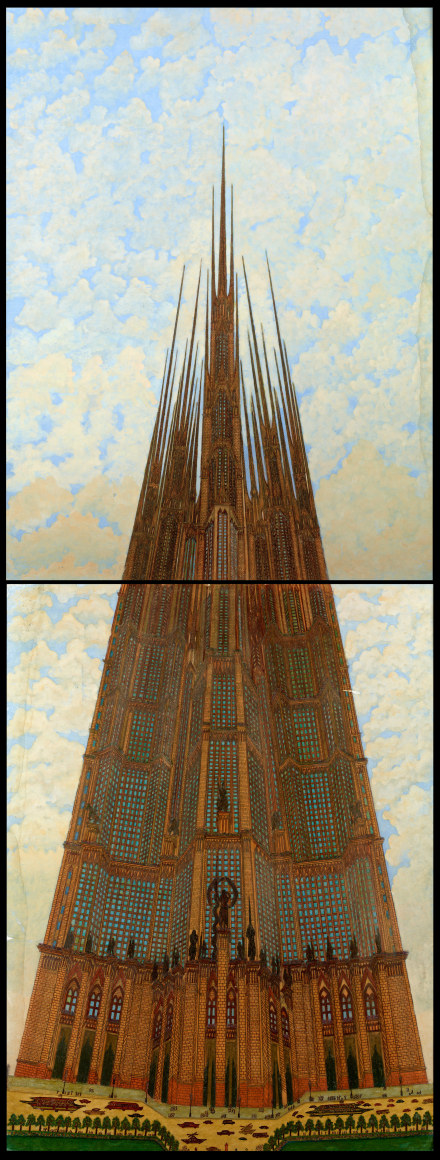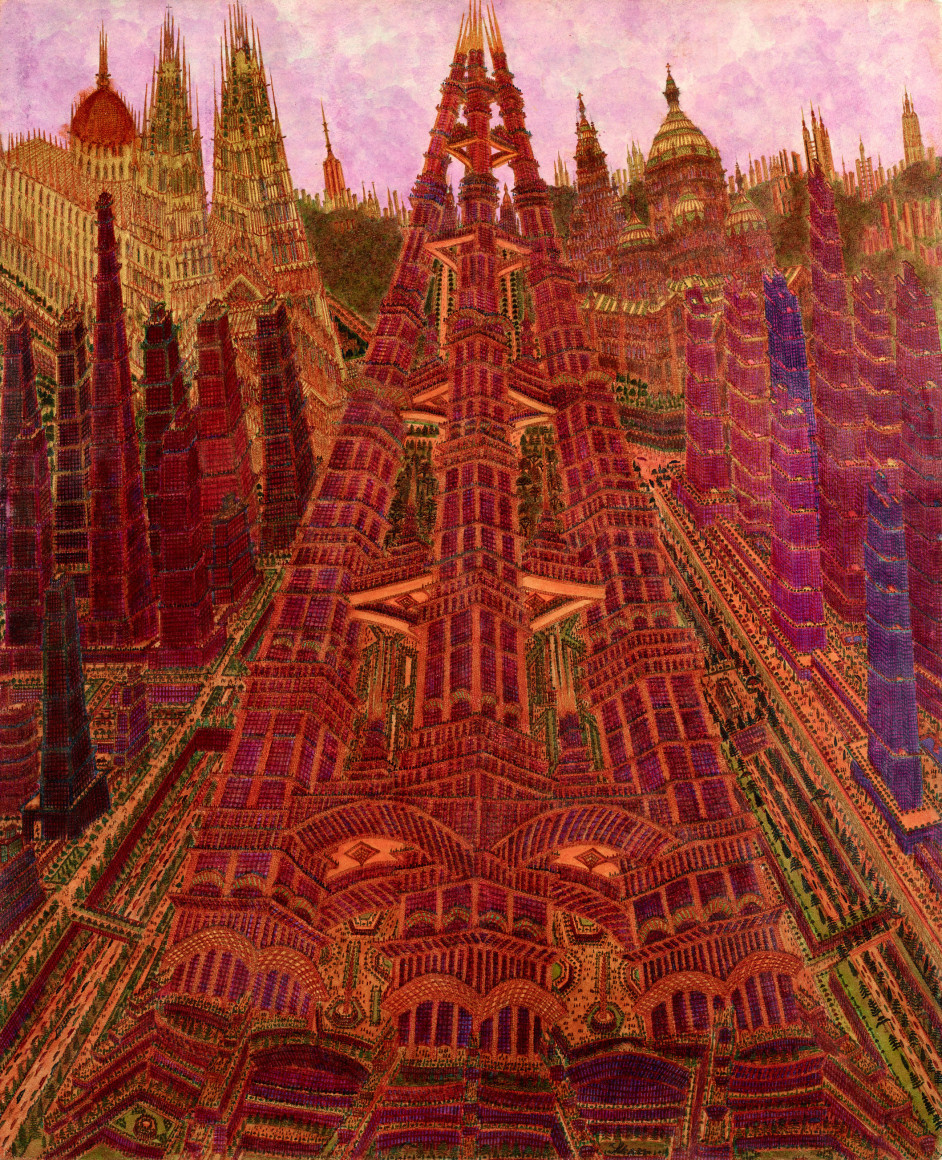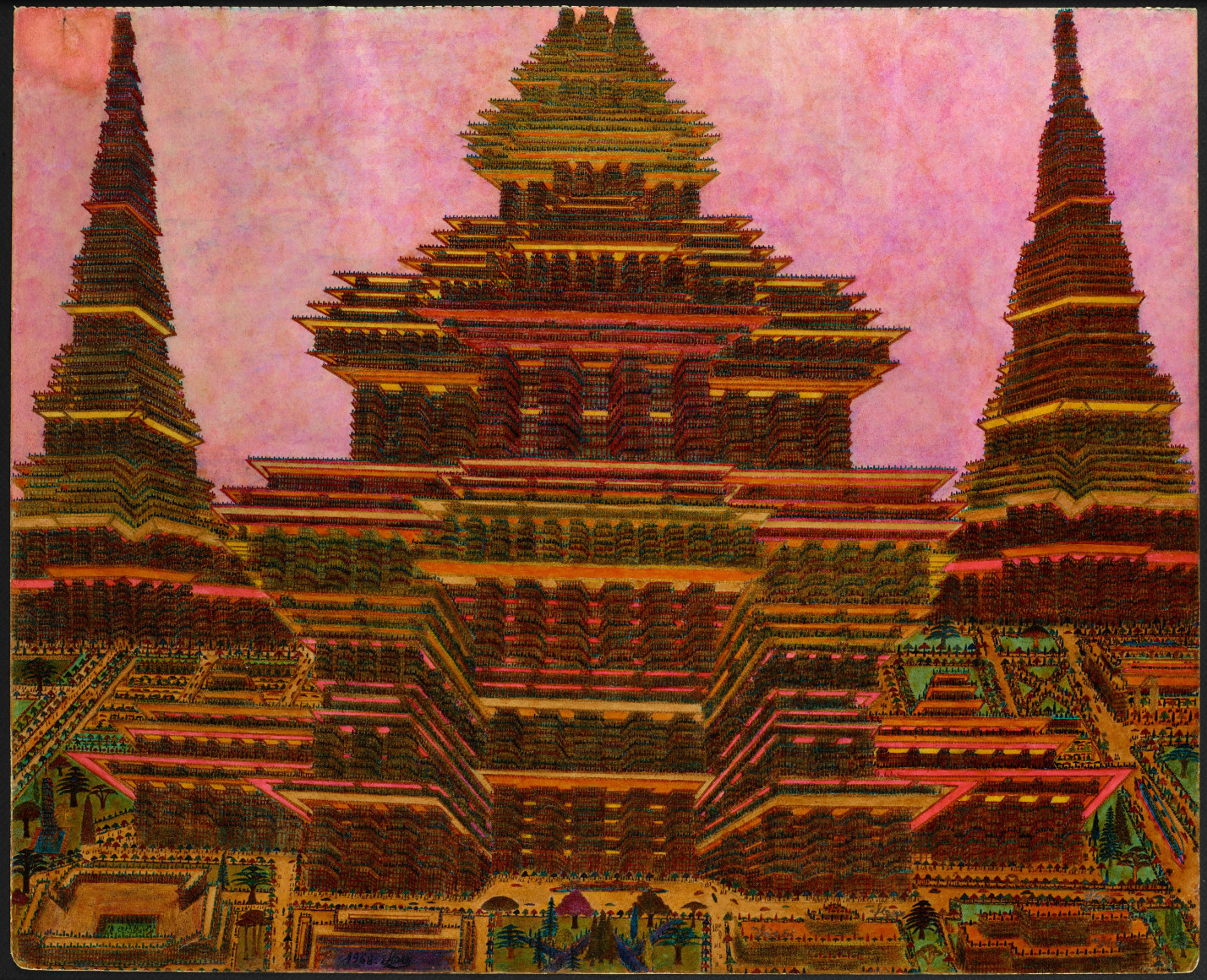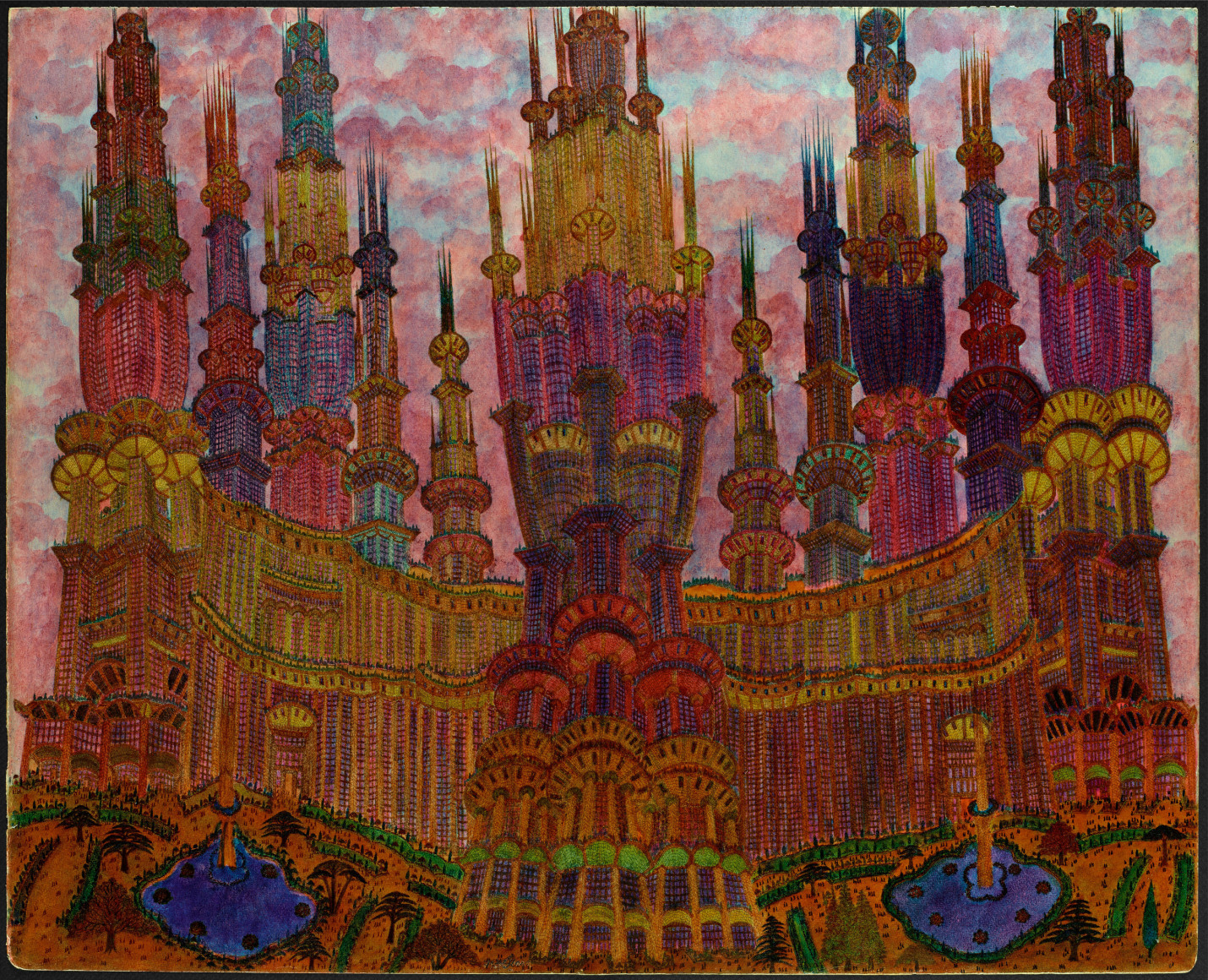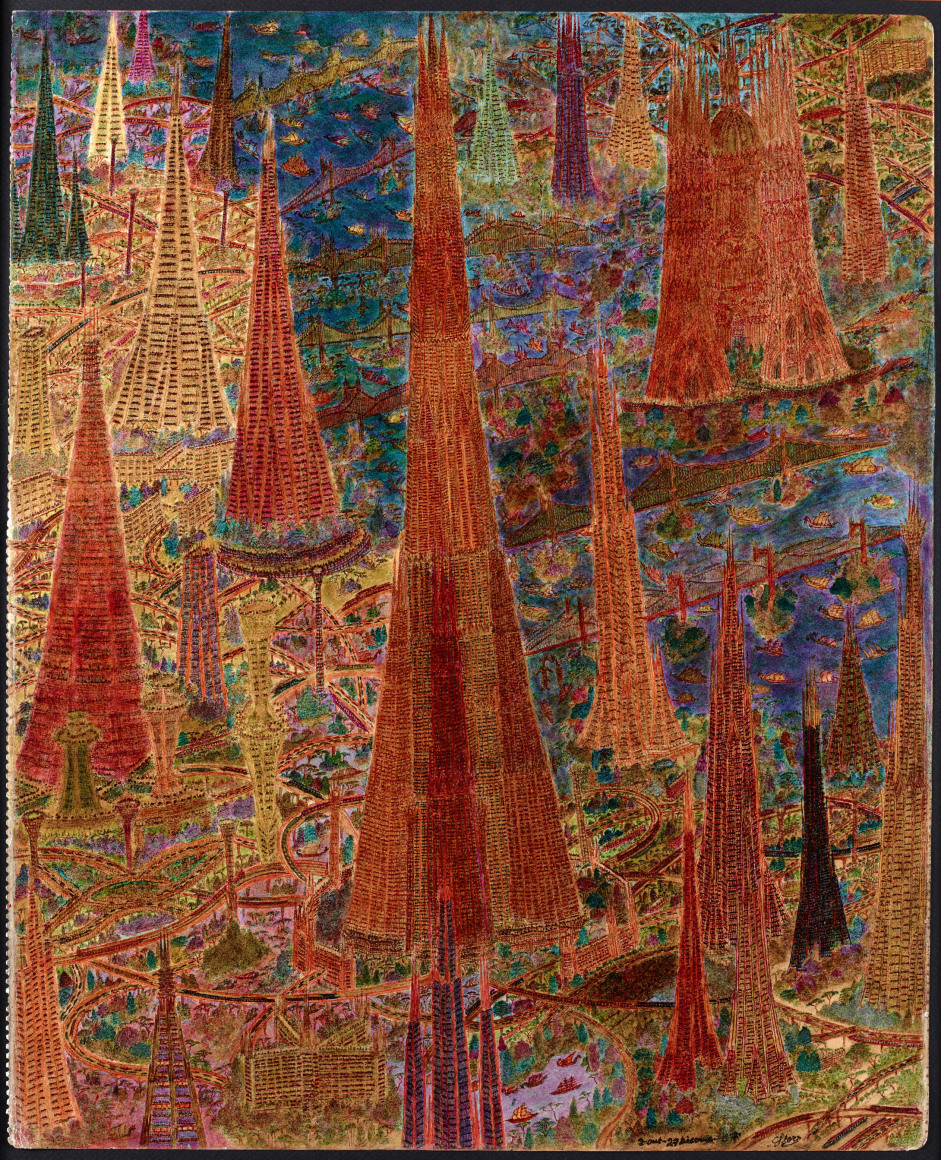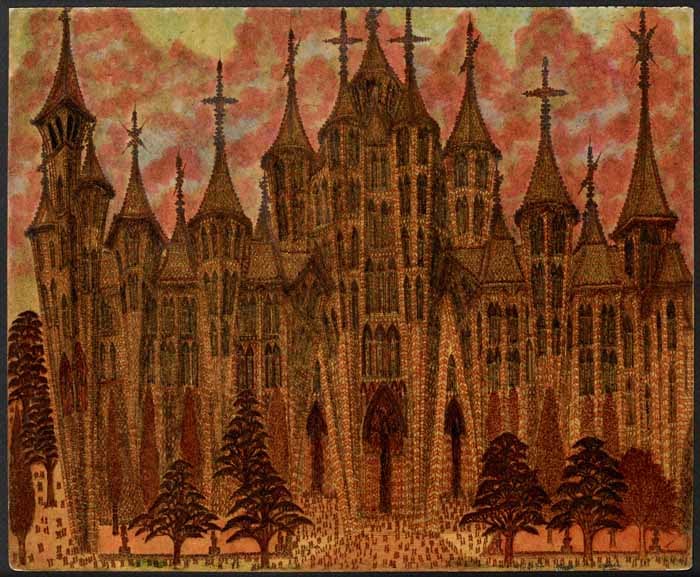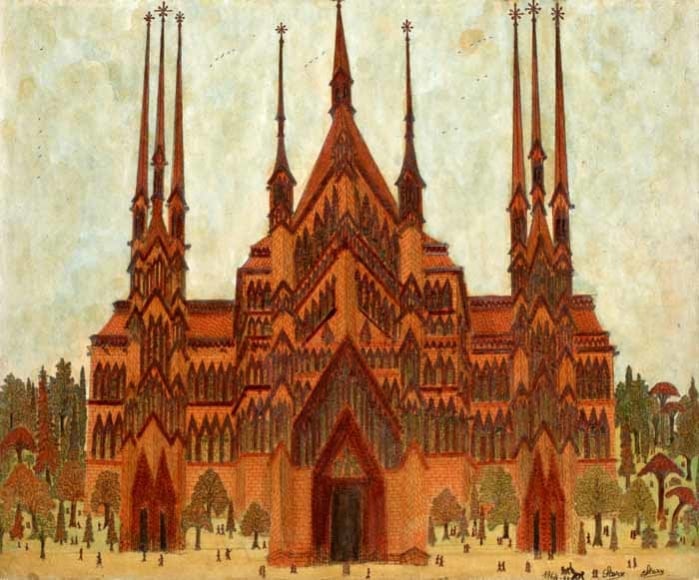Marcel Storr’s (1911-1976) extraordinary drawings of churches, overblown cathedrals and futuristic cities are the subject of this second exhibition with the gallery. Only 63 of his works are known to have survived and they were never exhibited until a selection was included in “Aux Frontieres de L’Art Brut No. 2” at Halle Saint Pierre (Paris) in 2001.
In a 2014 Artforum review, Donald Kuspit described Storr’s cathedrals and megalopolises as “at once awe-inspiring and urgently present – unmistakable symbols of transcendence.” He deemed them as what German philosopher and theologian Rudolf Otto (1869-1937) called ‘numinous objects,’ embodying and conveying a sense of the mysterium tremendum. According to Otto, numinous objects have 3 components: the numinous, which presents itself as merciful and gracious, mysterium, meaning wholly other, entirely different from anything we experience in ordinary life, and tremendum, meaning provoking terror because of its overwhelming power.
The earliest group of drawings presented, dated 1936 and 1937, are graphite and colored pencil compositions of modestly scaled houses of worship. Each brick, each clock, each stone saint in its niche, each roof tile, lintel, louver, tracery and gargoyle is rendered with patient care. They are depicted, as on a picture postcard, head-on and from a slight distance, their spires just touching the top of the paper. Some are quite believable as structures. Others seem more implausible, sprouting an unlikely number of towers or windows.
Nothing is known of Storr’s life in the years between the mid-1940s and the mid-1960s, but in 1964, Storr found employment as a street sweeper on the Bois de Boulogne. With a clear view from where he worked of the rising towers of La Defense, came inspiration. During a span of a little more than 12 months, Storr filled a Canson drawing pad with 25 pictures of cathedrals executed in pencil washed with colored inks and covered with a layer of varnish. Over the course of this series, the drawings become ever more outlandish, even as they continue to borrow from Byzantine, Romanesque, Gothic, Baroque, and Neoclassical design. At the same time, their mood becomes increasingly ominous, with curdled, red-tinged clouds filling the skies and swarms of birds circling the structures’ highest towers.
A third group of works consists of two larger, vertically stacked, multipart drawings of buildings and the fragments of several others. In these polyptychs, the point of view has shifted to one of a viewer standing at the base of the structures, which have grown from the size of cathedrals to edifices of unimaginable height and superabundant detail. The skyscraper in the diptych here bears an uncanny resemblance to New York City’s Rockefeller Center—down to its presiding sculpture of Atlas. (A possible inspiration were the issues of the weekly magazine L’Illustration found in Storr’s home after his death, which contained illustrated articles on, among other things, the 1939 New York World’s Fair and San Francisco Golden Gate Exposition, and New York City at night.)
The fourth and last series, unfinished at his death, were of drawings he called Mégalopoles— vast cities—in which boulevards are lined with neon-lit ziggurats; archipelagos of islands, each with its own arcology, surrounded by waterways plied by sailing ships; and formal gardens are filled with miniscule human figures, to which the architecture seems indifferent. Combining Late Gothic detail with contemporary scale, 12th-century ornamentation with 1930s foliate decoration, medieval and psychedelic colors, organic and crystalline forms, Storr’s imposing high-rises fully embrace the heroics (if not the rationalist esthetics) of modernism. It is unlikely that Storr (who hated both farmers and Communists) shared the Modernist desire for social or political transformation. But as with many utopian visions, his imaginings depended on the ruination of the present—he believed that Paris would be destroyed (by unspecified forces, presumably a nuclear attack) and that the President of the United States would need his drawings for its reconstruction.
In addition to the two gallery shows, Marcel Storr’s works have been featured in several museum exhibitions including the Museum of Old and New Art (Tasmania, 2017-8), the Kunsthal Rotterdam (2016), Centre Pompidou-Metz (2013) and the Hayward Gallery (London, 2013), which devoted an entire room to the artist’s work in the exhibition The Alternative Guide to the Universe (2013). Storr’s works are also held in the collections of Collection abcd (Paris) and the Museum of Everything (London).

